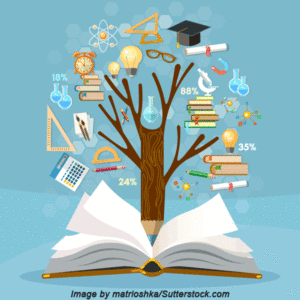New York Times science writer Benedict Carey put together a fascinating book entitled How We Learn: The Surprising Truth About When, Where, and Why It Happens. The book provides a rudimentary understanding of how the brain works and covers a large body of research on how to improve its functioning.
 As I’ve covered in prior posts, the brain is not a computer. It’s a survival machine that has adapted over the millennia to sense a vast quantity of data, filter out what it deems irrelevant, and embed data and memories in complex, overlapping networks. It may augment sensory data with its own contrivances to fill in any gaps in information. It may access and rewrite memories multiple times, changing the content ever so slightly with each processing. And it may establish relationships between seemingly unrelated pieces of data, intertwining old memories with new ones.
As I’ve covered in prior posts, the brain is not a computer. It’s a survival machine that has adapted over the millennia to sense a vast quantity of data, filter out what it deems irrelevant, and embed data and memories in complex, overlapping networks. It may augment sensory data with its own contrivances to fill in any gaps in information. It may access and rewrite memories multiple times, changing the content ever so slightly with each processing. And it may establish relationships between seemingly unrelated pieces of data, intertwining old memories with new ones.
The author is a self-described nose-to-the-grindstone kind of learner. He recalls all the stress and strain of studying as well as the frustration when other students found success with far less effort. So, he was keenly interested to unearth strategies to improve his learning process.
Here are some of the interesting findings from his book…
Memory has two components: a storage strength (how well something is learned) and a retrieval strength (how readily it can be drawn back to mind). The harder we work to retrieve a memory, the greater the subsequent increase in storage and retrieval strength. To that end, distributing one’s study time across multiple sessions supports deeper learning than concentrating one’s effort in a single session.
One downside of concentrated study is the false impression that we’ve mastered the material. We perform well on recall in the immediate aftermath of our efforts, but we have trouble with recall a short time later. And while “cramming” can get us through a test, it has limited efficacy in content retention over time.
Varying the background while learning enhances effectiveness. Music, light, background, colors can positively impact storage and retention. It also helps the brain adapt more readily to a testing environment that’s different from the study environment.
Pre-testing and “pop quizzes” increase the likelihood of performing well on a subsequent test, even if one does poorly on them. They help the brain focus on what’s important when studying.
The standard phases of problem solving include: (i) preparation (working on the problem until the point of impasse), (ii) incubation (ruminating on the problem in background), (iii) illumination (the “aha” moment), and (iv) verification (checking to see that the flash of insight proves true). During incubation, the mind is sensitive to information that might bear on the problem. Input may arrive piecemeal or all-at-one; it may change baseline assumptions about the problem. Time spent percolating often results in substantive breakthroughs and creative insights.
People demonstrate higher recall of unfinished or interrupted assignments than completed ones. There’s something about starting work that gives it psychological weight. It engenders a desire for fulfillment and tunes the mind toward collection of relevant input. It can be thought of as another form of percolating. It suggests a strategy of starting work on larger projects ASAP to build internal commitment and launch percolation… even if it’s just knocking out the small stuff.
Repetition of a specific skill set creates a powerful illusion of mastery (e.g., running scales on the piano). But skills improve quickly and then plateau. A better approach involves varying the content of practice and accepting the slower apparent rate of progress in each discipline (e.g., scales, music theory, repertoire). This interleaving produces stronger, longer lasting results… and works for motor and cognitive skills.
A new frontier of “perceptual learning” exploits the brain’s ability to detect differences in similar looking objects and use those insights to decipher new, previously unseen material. It introduces concepts, ideas, or meaning without detailed explanation and lets the students learn experientially. An example given in the book revolved around identifying works of art by historical period. The subject used randomized collection of flash cards and made impressive strides in knowledge by trial-and-error rather than reading through detailed characterizations of the various periods. The technique has also been used with great success to accelerate the learning curve for new pilots as they acclimate to reading and interpreting gauges on their dashboards.
The final piece to the learning improvement: Get a good night’s sleep. During sleep, the brain is consolidating memories, making connections, and separating the important from the trivial. It clarifies memories and sharpens skills.